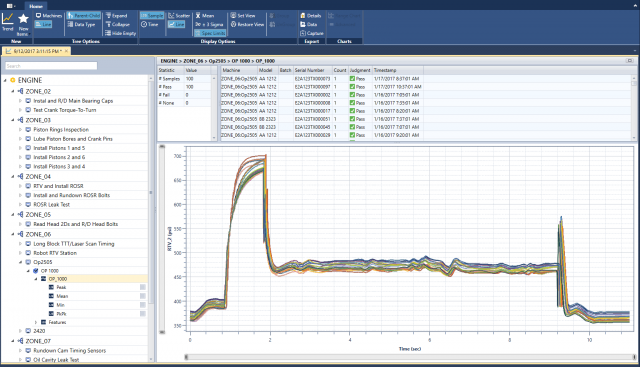
Contributed by: Nathan Sheaff - Founder, Sciemetric
Out of all the testing stations on a production line, leak testing is the station most prone to causing bottlenecks. Thus, reducing cycle time in leak test is essential to more efficient, productive operations.
Below are a few techniques to implement on your production line to reduce the cycle time in leak testing.
Employ digital technology on the production line
First, take advantage of optimized, modern electronics and low noise circuitry to control and measure the pressure and the flow in your leak test. The faster you can achieve a consistent and accurate pressure and flow signature during the stabilization phase of the test, the faster you can make a reliable pass/fail decision on a part.
Software is a key component to employing digital technology. Yes, you can improve the electronics, but it’s the software that allows you to achieve better pressure regulation, or to measure with greater accuracy to smaller increments. It’s software that will turn a conventional pressure gauge into a more sensitive and responsive piece of instrumentation, from which you can then pull data for analysis and draw conclusions for improvements across the line.
Visualize your data: Visual analytics with histograms
Next, consider how long the test phase must run for a leak problem to occur. The test should be optimized so that it doesn’t run a millisecond longer than it has to.
To find that sweet spot, you have to visualize the digital process signature (waveform) data from hundreds, even thousands of test cycles to pinpoint the appropriate limits.
This requires data management tools that can convert a selection of signatures into a histogram of leak rates to show the waveform for a good part and the range of acceptable deviation. This makes it easy to create and visualize a baseline against which to compare all parts.

Sciemetric Studio software presents waveform overlay trend to spot variations over test stations and parts.
It also becomes apparent where and by how much a test phase can be shortened. By analyzing historic data, it may become evident that a test cycle can be shortened from 10 to eight seconds, or even less, to maximize production capacity. How? Because the data shows that if an anomalous leak is going to happen, it will occur within the first few seconds of the test.
Shaving two or three seconds off your testing time may not seem like much, but when you multiply that by the thousands of units that may be produced and tested during a production shift, this can really boost production in your manufacturing facility.
Nathan Sheaff addresses this subject as part of Sciemetric’s “Ask the Expert” video series. Click here to watch this video, "How can I reduce the cycle time for my leak test?", and more.

